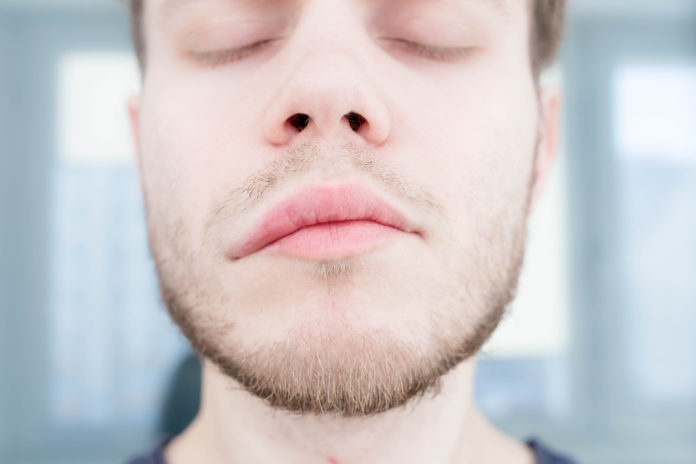A stroke occurs when the blood supply to part of the brain is interrupted or reduced, which deprives brain tissue of oxygen and nutrients. And within a matter of minutes, brain cells start to die.
Nonetheless, strokes are medical emergencies and require prompt treatment and by recognizing the signs and symptoms of a stroke, you can save your own (or someone else’s) life!
7 Signs of a Stroke in Men
Stroke symptoms are similar in both men and women and often come on suddenly, but being aware of these signs you’re having a stroke can be lifesaving:
- Overall fatigue and difficulty breathing
- Nausea and/or vomiting
- Numbness or weakness of the face, an arm, or leg, especially on one side of the body
- Feeling confused and trouble speaking or understanding speech
- Difficulty seeing in one or both eyes
- Trouble walking, dizziness, loss of balance or coordination
- Developing a severe headache without a known cause
Think FAST
According to the American Stroke Association (ASA), you should use the acronym “fast” to spot stroke signs:
- FACE drooping: Does one side of the face droop or is it numb? Ask the person to smile. Is the person’s smile uneven or lopsided?
- ARM weakness: Is one arm weak or numb? Ask the person to raise both arms. Does one arm drift downward?
- SPEECH difficulty: Is speech slurred? Is the person unable to speak or hard to understand? Ask the person to repeat a simple sentence. Is the person able to correctly repeat the words?
- TIME to call 911: If someone shows any of these symptoms, and even if the symptoms go away, call 9-1-1 and say, “I think this is a stroke!” to help get the individual to the hospital as soon as possible. Also note the time when the first symptoms appeared, as emergency responders will want to know for a thorough assessment.
Ultimately, the longer the time devoid of medical assistance, the higher the chance of brain damage or disability from the stroke. Every second counts when it comes to a stroke, as treatment works most effectively within the first hours after the first symptom started.
Unsure? Call 911 anyways!
Risk Factors for Stroke
Gender
Women have more strokes than men annually, along with taking the lives of more women. There are numerous factors specific to females that raise their risk of stroke, including a history of preeclampsia and/or eclampsia and gestational diabetes during pregnancy, oral contraceptive use, and post-menopausal hormone therapy.
However, men who survive strokes tend to recover more quickly and with better health outcomes compared to women, such as being less likely to experience stroke-related disabilities, depression, fatigue, and poorer quality of life.
Age
Although stroke can occur at any age, they are more common in the senior population. In fact, the likelihood of having a stroke nearly doubles every 10 years after age 55.
Race and Living Area
According to the Centers for Disease Control and Prevention, “the risk of having a first stroke is nearly twice as high for blacks as for whites and blacks have the highest rate of death due to stroke.” Additionally, “though stroke death rates have declined for decades among all race/ethnicities, Hispanics have seen an increase in death rates since 2013.”
Individuals living in the “stroke belt” also have an increased likelihood of experiencing a stroke. The “stroke belt” is described as an 8-state region with high stroke mortality across the southeastern United States, including Alabama, Arkansas, Georgia, Louisiana, Mississippi, North Carolina, South Carolina, and Tennessee.
Genetics
A family history, including if your parent, grandparent, sister or brother has had a stroke (especially before reaching age 65), places you at greater risk of having one.
Strokes can also be caused by genetic disorders individuals are born with, including Cerebral Autosomal Dominant Arteriopathy with Sub-cortical Infarcts and Leukoencephalopathy (CADSASIL), which is an inherited form of cerebrovascular disease that can block the flow of blood to the brain.
Health Conditions
A previous or current health condition increases stroke risk, including high blood pressure (hypertension), diabetes, high blood cholesterol, sickle cell disease, and other heart diseases. Prior stroke, transient ischemic attack (TIA), or heart attack also raises the risk of a future stroke.
Lifestyle Habits
There are a number of lifestyle habits that increase the risk of stroke, including a poor diet, especially if rich in sodium and unhealthy fats and devoid of fruits and veggies; physical inactivity, which increases the risk of obesity and chronic diseases; and smoking, with the combination of cigarettes and birth control pills greatly increasing stroke risk.
Ultimately, a healthcare professional can help establish preventative care measures one can take to reduce the risk of heart disease and stroke, which is likely to include embracing healthy lifestyle to help mitigate and manage these conditions.









